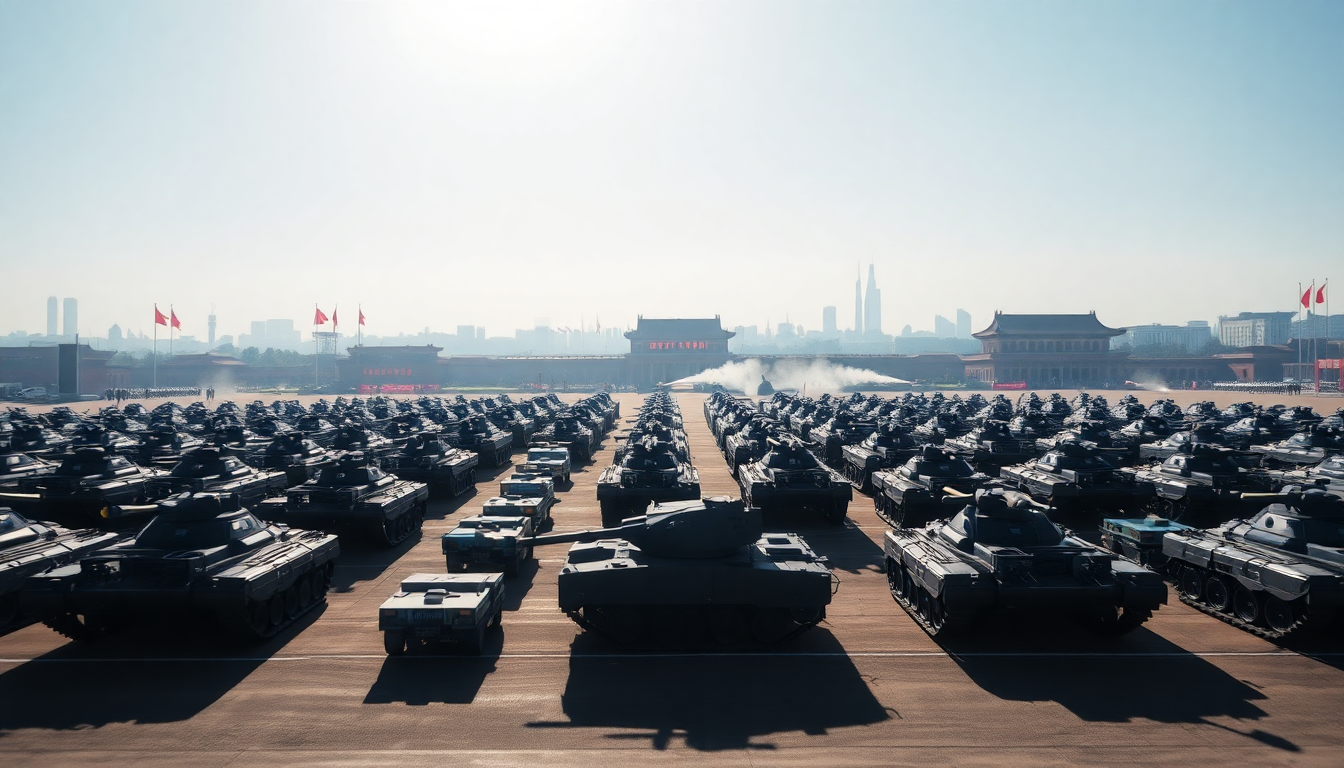Table of Contents
In a striking display of military prowess, recent photos and videos circulating online have unveiled an array of advanced weaponry showcased during a rehearsal for a military parade in Beijing. This event, commemorating the 80th anniversary of the end of World War II, goes beyond mere celebration; it serves as a demonstration of China’s growing capabilities in modern warfare.
The images reveal not only the sheer scale of the military hardware but also the sophistication and technological advancements that are now part of China’s defense arsenal.
Showcasing Cutting-Edge Weaponry
The parade rehearsal was nothing short of impressive, featuring a significant lineup of military technologies.
From new hypersonic anti-ship missiles to a road-mobile intercontinental ballistic missile system, the advancements were astounding. Among the highlights were unmanned underwater vehicles, a formidable laser weapon, and an impressive fleet of drones and unmanned ground vehicles, alongside next-generation tanks and armored vehicles.
These developments underscore China’s commitment to enhancing its military capabilities and asserting its presence on the global stage. But what does this mean for the rest of the world?
Hypersonic Missiles: A Game Changer
Among the most notable items on display were the latest additions to the YJ series of anti-ship missiles.
The photographs revealed the YJ-15 missile along with three others that appeared to be hypersonic: the YJ-17, YJ-19, and YJ-20. The YJ-17 stands out, particularly due to its distinctive hypersonic glide vehicle—a design reminiscent of the DF-17, which is currently China’s first hypersonic glide missile in service.
Curious about the tech behind these? The YJ-19, sporting air inlets and similarities to the Russian Zircon hypersonic cruise missile, hints at advanced air-breathing scramjet technology that boosts its speed and maneuverability.
Furthermore, the YJ-20’s biconic aerodynamic shape suggests its capabilities as a maneuverable re-entry vehicle.
This innovative approach to missile design illustrates just how far China has come in military technology, potentially altering the balance of power in naval engagements around the globe.
Understanding the Context of the Military Parade
Preparations for the military parade are in full swing, with the main event set to take place in the heart of Beijing on September 3. But this isn’t just a ceremonial display; it’s a strategic showcase of China’s military evolution. As nations worldwide grapple with security challenges, China’s exhibition of advanced weaponry sends a clear message about its readiness to defend its interests. Isn’t it fascinating how military parades serve as platforms for countries to demonstrate their might and advancements?
This year’s event holds particular significance, marking eight decades since a pivotal moment in global history. The focus on modern weaponry reflects a shift in military strategy that aligns with contemporary geopolitical realities. It prompts us to consider: how will this affect global alliances and tensions?
Implications for Global Security
The unveiling of these advanced military capabilities raises crucial questions about regional and global security dynamics. As China continues to invest in and develop its military technologies, neighboring countries and global powers must reassess their strategic approaches to ensure stability in an increasingly complex security environment. The advancements in hypersonic technology alone could dramatically reshape naval warfare, compelling other nations to enhance their defensive and offensive capabilities in response.
In conclusion, the recent military parade rehearsal in Beijing serves as a stark reminder of the rapid advancements in military technology and the shifting landscape of global power. With China leading the charge in hypersonic missile technology and other innovations, the world must remain vigilant and responsive to these developments. What does the future hold for global security in light of these advancements?





